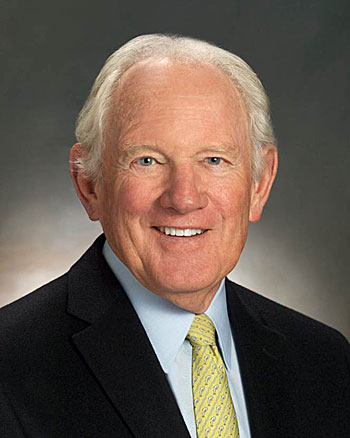June 7, 2016 Presidential Primary Election
Times Publishing Group, Inc., as the publisher of the Scotts Valley Times, is devoted to the task of informing the voters concerning the candidates’ positions on current issues rather than endorsing a particular person for the office.
For the Santa Cruz County Board of Supervisors, District 5 election there are three candidates: incumbent Bruce McPherson, civil engineer Bill Smallman and electrical engineer Roy Kaylor. All three were sent our questions. McPherson and Smallman responded, Kaylor did not. Here are our questions and their responses.
•••
Q1: Affordable housing is becoming harder to find in our county. What can the county do to help provide affordable housing for seniors, public employees such as teachers, and young people entering the labor force?

We all know of our high housing costs here, and the County doesn’t have a budget to fill that void. With recently approved state legislation, we are taking actions to implement so-called “sustainable” housing proposals. That includes increasing densities along major transportation arterials within existing urban lines so residents may be more readily served to get to and from work, school, shopping, and recreational activities.
In our County, even with this as a basis to help meet our housing needs, relative prices for housing here can be expected to be high. Coordinating our infrastructure needs — water, energy, sewer, etc., as well as transportation — can help to hold/reduce monthly “living”/housing) costs.
Smallman: In my District, the ideal place would be near the proposed Town Center in Scott’s Valley. So, if elected, I would highly support the City of Scott’s Valley in providing affordable and senior housing in this area, which would help support the businesses within walking distance. I would also look into making rental, “granny” units on residential properties in the County’s jurisdiction easier to build.
Q2: Petty crime is rising locally at an alarming rate. What can the county do to better protect its citizens and their property?
McPherson: Actually, incidents of petty crime thankfully have held steady, if not declined, in some of the unincorporated areas. We have added sheriff’s patrol positions in our past three budgets and I anticipate we will add more in June budget sessions.
Our goal is to be proactive to assist citizens from falling prey to crime. We have added a Consumer Fraud Unit (454-2930) in the District Attorney’s Office to address beforehand the mushrooming wave of scams, frauds and elder abuse. Thus includes outreach to the community, particularly our elderly residents. Expansion of Neighborhood Watch areas are always welcome … we need the community’s help in addressing this issue.
Another welcome program in the DA’s Office is establishment of a “multi-disciplinary interview team center” that provides a family-friendly facility to conduct interviews so a child may tell his/her story once and avoid the trauma of having to repeat it to several agencies.
Q3: Santa Cruz County is known as a difficult place for builders and developers because of its complex and expensive planning process. Should this process be made even more difficult to essentially stop any more development, remain the same, or be made easier to encourage moderate economic growth and affordable housing?
Our ongoing goal is to ensure environmental and neighborhood protections, but to make sure the rules are clear so one may estimate the time and cost it will take to complete a proposal. Santa Cruz County residents appreciate their natural surroundings, and we also have a housing crisis that must be addressed to meet the needs of an ever-increasing population, as low as that increase may be. We will continue our efforts to “simplify” the process so applicants have a clear picture of what to expect.
Smallman: “Should this process be made even more difficult to essentially stop any more development” — This is about as idiotic, as not widening the highway to stop urban sprawl.
My proposal is to create an advisory Economic Development Board, which ideally would have a Developer and a Builder on it. They would provide advice to clean up this Department, and make it very simple and cost effective, and will be even more thorough by having very qualified plan reviewers. This is not difficult. Someone or some group obviously must have made this confusing and expensive either because they were unqualified or wanted to stop growth as you mentioned.
If elected, I am also going to create a Regional Water Authority, which will create a sustainable water system model, which will bring the topic of the maximum number of allowable water service connections to the table, which will put a complete halt to all growth at sometime in the future, after we are gone. We cannot stop growth now because we need this affordable housing plus the prices of existing homes will go up too high. We can however, make decisions for future generations on a sustainable number of people enjoying the same quality of life we have.
Bottom line, if you do not discuss the question of exactly how many people can live here, happily and healthy, then every development will be met with controversy, because anti-growth advocates will argue it will never end.